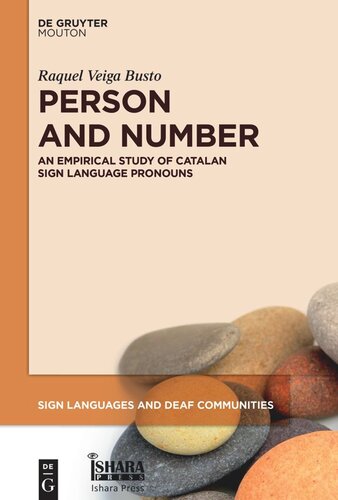

Most ebook files are in PDF format, so you can easily read them using various software such as Foxit Reader or directly on the Google Chrome browser.
Some ebook files are released by publishers in other formats such as .awz, .mobi, .epub, .fb2, etc. You may need to install specific software to read these formats on mobile/PC, such as Calibre.
Please read the tutorial at this link: https://ebookbell.com/faq
We offer FREE conversion to the popular formats you request; however, this may take some time. Therefore, right after payment, please email us, and we will try to provide the service as quickly as possible.
For some exceptional file formats or broken links (if any), please refrain from opening any disputes. Instead, email us first, and we will try to assist within a maximum of 6 hours.
EbookBell Team

4.8
14 reviewsPerson and number are two basic grammatical categories. However, they have not yet been exhaustively documented in many sign languages. This volume presents a thorough description of the form and interpretation of person and number in Catalan Sign Language (LSC) personal pronouns. This is the first book exploring together the two categories (and their interaction) in a sign language.
Building on a combination of elicitation methods and corpus data analysis, this book shows that person and number are encoded through a set of distinctive phonological features: person is formally marked through spatial features, and number by the path specifications of the sign. Additionally, this study provides evidence that the same number marker might have a different semantic import depending on the person features with which it is combined.
Results of this investigation contribute fresh data to cross-linguistic studies on person and number, which are largely based on evidence from spoken language only. Furthermore, while this research identifies a number of significant differences with respect to prior descriptions of person and number in other sign languages, it also demonstrates that, from a typological standpoint, the array of distinctions that LSC draws within each category is not exceptional.